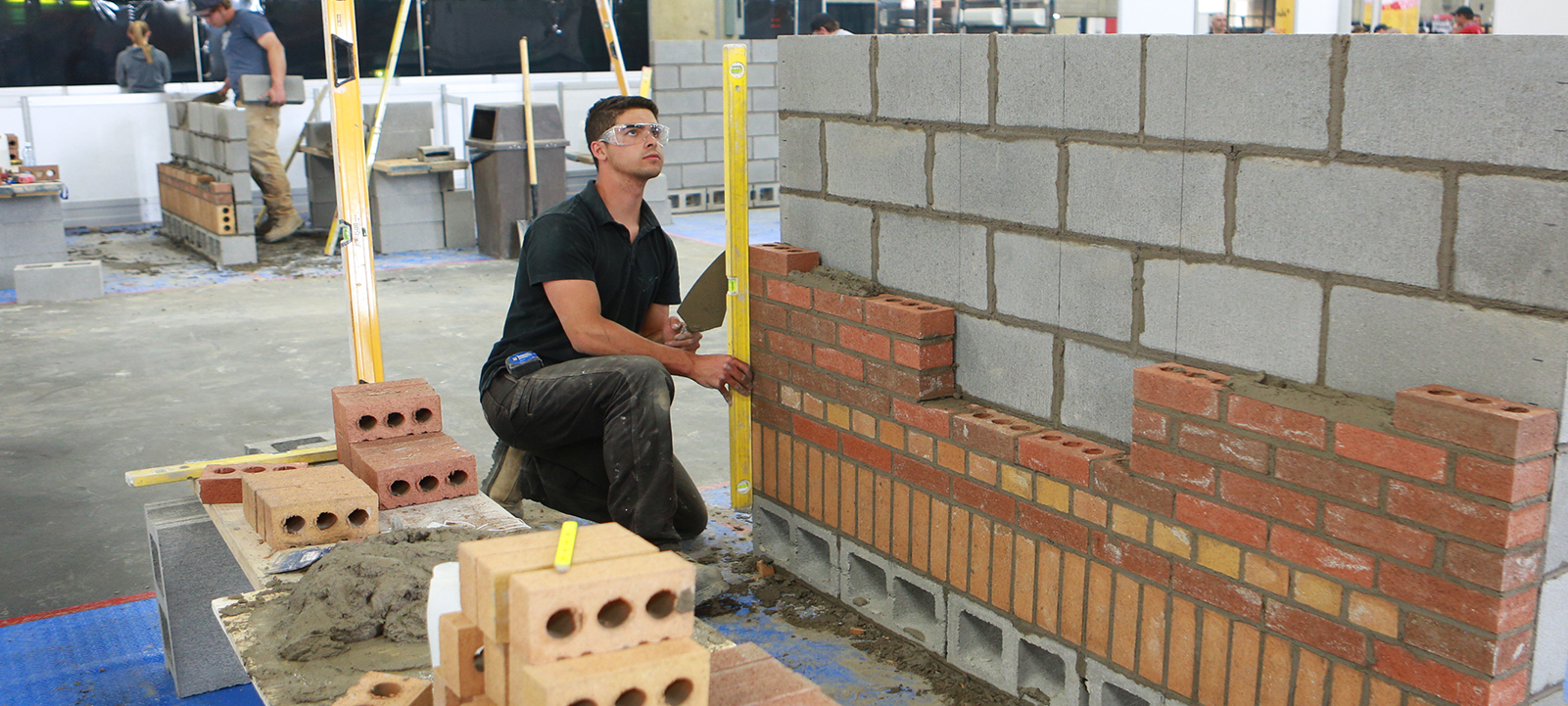4 Easy Facts About Bricklayer Auckland Shown
Wiki Article
Bricklayer Auckland Things To Know Before You Get This
Table of ContentsHow Bricklayer Auckland can Save You Time, Stress, and Money.The Best Strategy To Use For Bricklayer AucklandThe Greatest Guide To Bricklayer Auckland7 Easy Facts About Bricklayer Auckland Shown
The distinction between no and also classic stonework is in the laying of the block. The block is no more pushed up and down, however tilted. Absolutely no has a special opening on the upper side of the brick. Therefore the mortar bed is lower. It will sink also much deeper when the following course of bricks is laid.On top of that, we additionally focused on an excellent percentage in between the size and also width of the block to ensure that it is perfect for dealing with a stretcher bond. This means the job continues rapidly. Advantage, For a contractor in this manner of functioning is hardly an obstacle. He can deal with the material/equipment that knows to him.
Bricklayers are an important occupation in the construction industry, in charge of laying bricks, pre-cut stone and concrete blocks in mortar. Bricklayers construct, prolong and also fix residential as well as industrial buildings, and also other structures such as structures, wall surfaces, chimneys or decorative stonework. Getting to the end of a job as well as being able to say 'I constructed that' offers an actual sense of achievement for brickies.
Your time as a bricklaying pupil will commonly be split between your company and training provider (such as a college), with at the very least 20% of your normal functioning hrs spent on training. Your training could take place each week, monthly or in a separate block of time, and also it can happen at your area of work, at your training provider or online.
The 8-Minute Rule for Bricklayer Auckland
When researching building and construction, you inevitably discover that any kind of new or cutting-edge suggestion has really been attempted over as well as over once again, usually extending back years. Among these new-but-actually-old concepts is the idea of a mechanical bricklayer, a machine to automate the construction of stonework walls. It's very easy to see the appeal of this idea - stonework construction appears almost perfectly matched for automation.It doesn't feel like it would call for literally complex movements - each brick gets a layer of mortar used, and also is just laid in place alongside the previous one. And because each physical joint is the exact same size, positioning is practically deterministic - each brick coincides fixed distance from the previous one.
These devices could not sense anything concerning their atmosphere, or measure where a brick required to go - they just squeezed out a layer of mortar and mechanically placed a block at normal periods (Bricklayer Auckland). It's vague the amount of of these devices ever made it past the attracting board, yet at least one of these (John Knight's) was utilized to build a block wall that presumably still stands today.
Over the years, masonry has dig this declined in relevance as a construction technology in the industrialized world, and with it the rate of interest in automating it. Unlike with concrete 3D printing, where there are lots of attempts to develop the modern technology, I can only locate a handful of current efforts to automate stonework. Bricklayer Auckland.
An Unbiased View of Bricklayer Auckland
It's qualified of placing blocks in limited corridors or complicated edges, and Hadrian can construct all the wall surfaces of a small building with simply a couple of relocations of the automobile. Hadrian can presently set about 200 blocks a hr, however they're intending to be able to do 1000 blocks an hour or more (the blocks it establishes are various from the block masonry used in the United States, however in United States masons can establish someplace in the area of 400 blocks a day).
SAM has a collection of sensing units to make up for the motion of the system as well as ensure it's placing blocks level, and also can deal with bricks of all various sizes (though it won't develop CMU obstruct walls). It gets placed to a movable scaffolding that's elevated gradually as the wall surface is completed.
The advertising product on Construction Robotics' site suggests that it's no longer their primary emphasis - even more focus is provided to their various other item, MULE.Other than SAM and also Hadrian, there are a couple of other mechanical bricklayers in numerous stages of development. You also see the occasional academic effort. One location where we do see some commercial success with mechanical bricklaying is with brick roadways - a selection of firms supply machines that can "print" an area of roadway made of blocks.
Little Known Questions About Bricklayer Auckland.
A somewhat different group of makers focused on improving stonework productivity is what I'll call "stonework aides". These are makers developed to assist with literally lifting the block (they appear to be much more common with block than block) navigate here as well as taking the strain off the mason, while still enabling the mason to manipulate it right into position, Stonework aides date from a minimum of 1994, when the army experimented with MOTHER, the Mechatronically Assisted Mason's Aid.
Report this wiki page